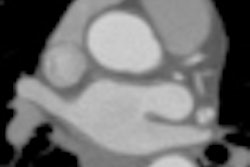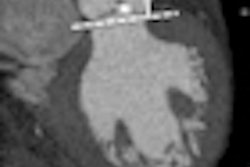Digital mammography provides higher positive predictive values (PPVs) than film-screen mammography for both further assessments and invasive procedures, according to Spanish researchers. The greatest improvement, however, was found for masses, they reported in a study published in the May edition of European Radiology.
Full-field digital mammography (FFDM) systems have been commercially available since 2000, and in that time some studies have reported an overall higher cancer detection rate (as well as a higher recall rate) when compared with film-screen mammography. Other studies have reported lower recall rates and fewer false-positive results, leading to better PPV for digital systems compared with film-screen modalities.
However, few studies exist with results concerning differences in the radiological findings for women recalled for diagnostic workup in film-screen mammography versus digital mammography in population-based screening programs, according to the researchers.
"The need from data from population-based programs is especially pressing because a false-positive result leading to an invasive procedure has a greater negative physical impact on women and involves a higher cost than imaging procedures," wrote Laia Domingo from the department of epidemiology and evaluation at the Municipal Institute for Medical Research-Hospital del Mar in Barcelona, Spain, and colleagues (Eur Radiol, 11 May 2011).
The researchers sought to compare tumor characteristics between cancers detected with film-screen mammography and digital mammography, and compared the PPVs for the techniques.
The researchers examined 242,838 screening mammograms (171,191 film-screen, 71,647 digital) performed on 103,613 women in four population-based screening programs in Spain. They found that the percentage of ductal carcinoma in situ (DCIS) cancers detected was higher with digital mammography (18.5%) than with film-screen mammography (15.8%). PPVs for masses, asymmetries, and calcifications also were higher with digital mammography. PPVs for masses reached statistical significance: 5.3% for digital versus 3.9% for film-screen. In cancers detected by calcifications, the percentage of DCIS was higher in digital mammography (60.3% versus 46.4%).
The authors noted several limitations in their study, one being a short period of using digital mammography. They also noted the differences observed in tumor characteristics and the slightly higher rates of DCIS observed with digital mammography, which they thought could suggest an advance in early detection. However, a longer period of using digital is needed to confirm the findings.
Even so, digital technologies seem to decrease the adverse effects related to recalls and false-positive results, while at the same time digital mammography's detection rate is at least as good as film-screen, the authors wrote.
"Because most European screening programs are population-based, changes in screening results would prevent a large number of women from experiencing the adverse effects of this preventive modality and would reduce related costs," they wrote. "In the USA, where recall rates could be at least two or three times higher than in Europe, the impact of these findings could represent a greater improvement."



















